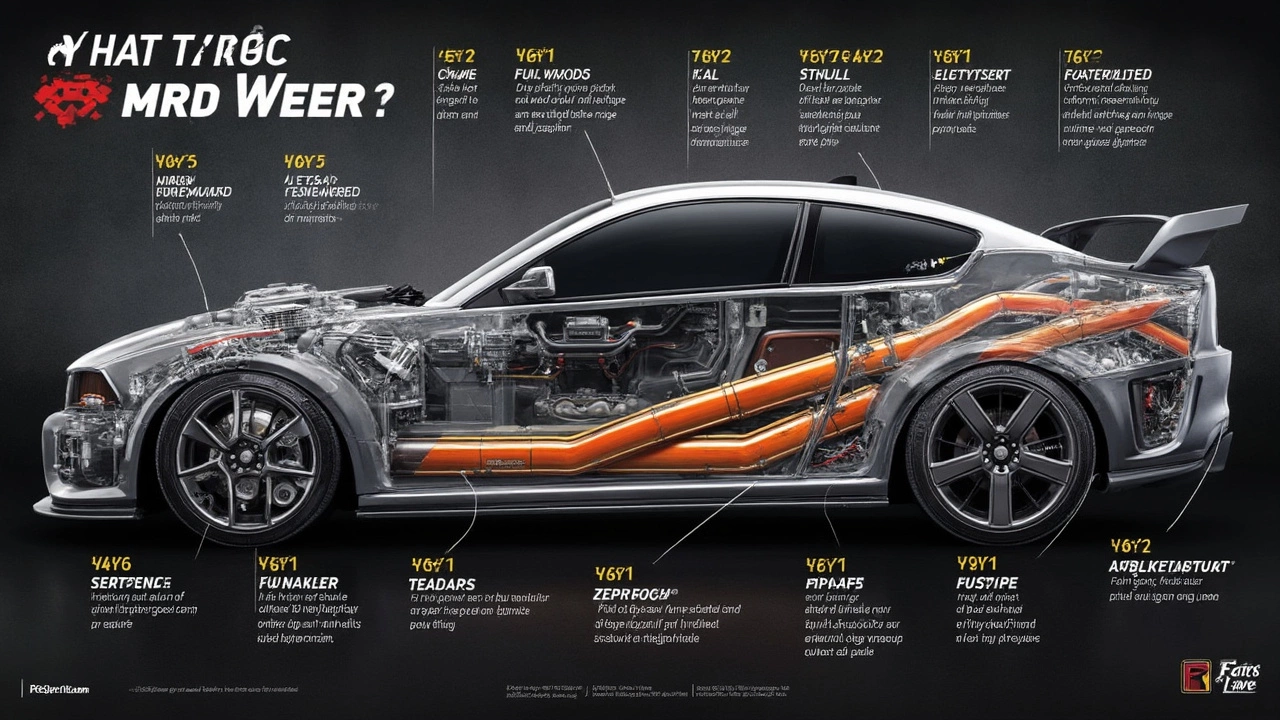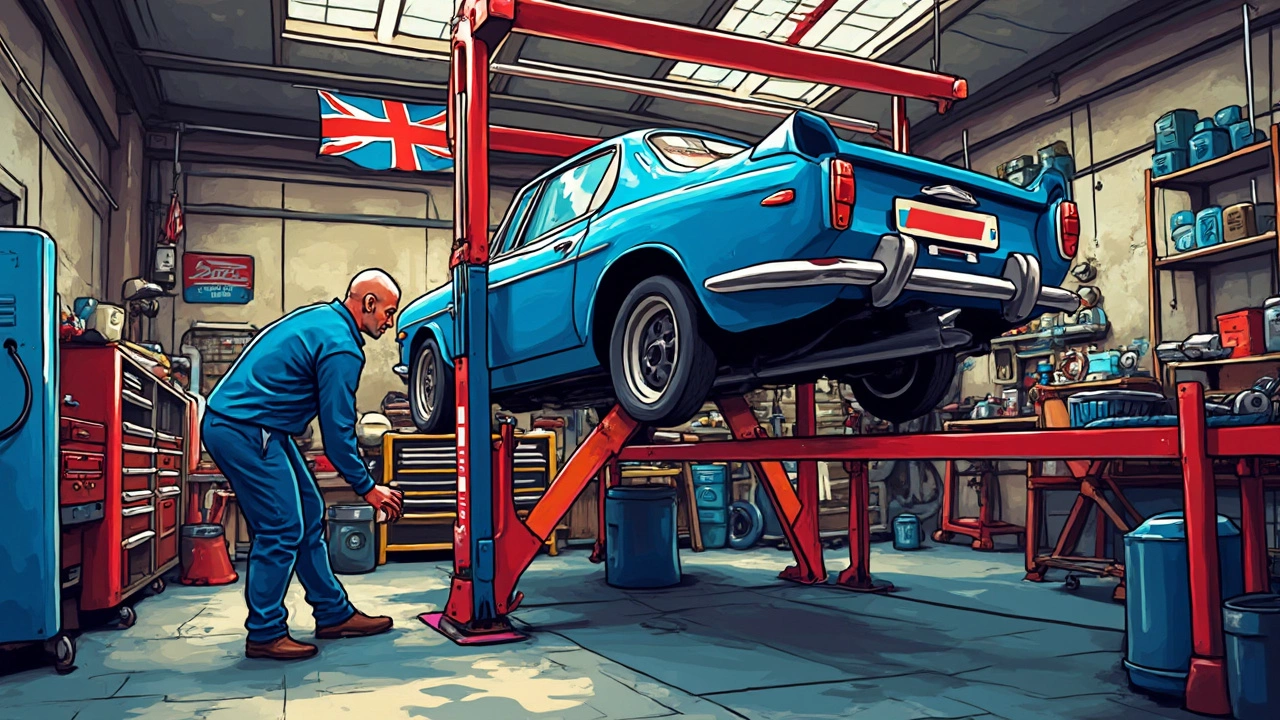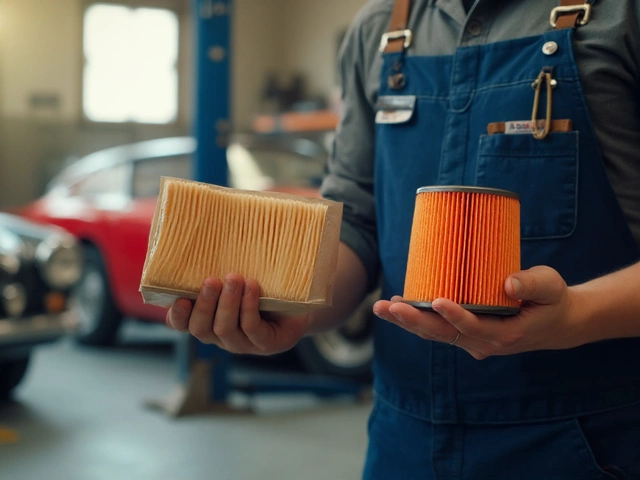Ever wondered if upgrading your car's exhaust system is worth the hype? There's a good reason why car enthusiasts frequently talk about exhausts—because they can make a real difference. But the million-dollar question is whether they add horsepower. Let's unravel that mystery.
Exhaust systems are like the lungs of your car. The better they can breathe out, the better your engine can breathe in. But here's the thing: not all exhaust systems are created equal. The design, material, and even the installation process can influence how much horsepower, if any, is added to your ride.
Before you grab your tools or swipe your credit card for a new exhaust system, it's crucial to know how they interact with your engine. This can save you time, money, and frustration. We'll dive into those specifics and clear up some common myths. Ready to find out if that custom exhaust is gonna give you the extra oomph you're looking for?
- The Role of Exhaust Systems
- How Horsepower is Affected
- Types of Custom Exhausts
- Installation Considerations
- Real-world Performance Gains
The Role of Exhaust Systems
Alright, so the exhaust system isn't just a bunch of pipes hanging under your car. It's actually doing a lot of important work. Think of it as the superhero cape for your engine. It helps direct and manage the waste gases—something your engine needs to run efficiently.
The basics? An exhaust system mainly consists of the exhaust manifold, catalytic converter, resonator, and muffler. Each of these components has a job to do. The exhaust manifold collects exhaust gases from the engine’s cylinders, and the catalytic converter helps cut down on pollution. After that, the resonator tunes the engine’s sound, and finally, the muffler quiets it down before everything exits the tailpipe.
But how does this relate to horsepower? Well, the quicker and more efficiently these gases exit, the less work the engine has to do. A free-flowing exhaust can reduce backpressure and increase engine efficiency, which often leads to a slight bump in power. However, this effect varies by vehicle and how restrictive the stock system was in the first place.
Custom exhausts come into play when you're looking for that extra boost. They often have wider pipes and fewer bends, and they're optimized for performance, not just for keeping things quiet. This can lead to better exhaust flow and, yes, potentially more power.
If you're considering an upgrade, remember it's not just about slapping on any old system. Choosing the right exhaust system that matches your car's specifications and your performance goals is key to unlocking its full potential.
How Horsepower is Affected
When it comes to boosting horsepower, the exhaust system plays a pretty significant role. Think of it as one of the first steps in unleashing more power from your engine. Here's how it works: by reducing back pressure, a custom exhaust system allows exhaust gases to escape more freely. This essentially helps the engine breathe better, which can lead to an increase in power output.
Now, let's break it down. When your car's engine can push out exhaust gases more easily, it can take in more air and fuel, resulting in better combustion. This improved airflow can lead to more power being generated during those combustion cycles. But how much of a bump in horsepower are we talking about? Well, it varies. Typically, a quality custom exhaust might boost horsepower by 5-10%. While that might not sound huge, for performance enthusiasts, every bit counts and it can make a noticeable difference.
Several factors determine the increase. The diameter of the pipes, the type of muffler, and whether or not the system is a cat-back or axle-back setup all come into play. For instance, larger diameter pipes can reduce back pressure even further, but if they’re too large, they could actually reduce performance by upsetting the balance of airflow. It’s all about finding the right setup for your specific engine.
- Pipe Diameter: Important for balancing back pressure and flow.
- Muffler Type: Impacts sound and restrictiveness.
- Setup: Cat-back vs. axle-back designs have different effects.
In some cases, you might actually see documented results. Manufacturers often provide dyno charts showing potential gains from their custom exhaust systems, giving you a ballpark figure of what to expect. These charts are based on controlled experiments and might differ slightly in real-world conditions, but they’re a good starting point.

Types of Custom Exhausts
So, you're thinking about boosting your car's performance with a custom exhaust? Great choice! Let's break down what’s out there so you can figure out what suits your needs—and your ride. Understanding the different exhaust systems will make a world of difference.
First up, we have the cat-back exhaust. This one replaces everything from the catalytic converter back. It's a popular choice because it tends to offer noticeable gains in both sound and performance. You'll usually see an improvement in exhaust flow and sometimes a bump in horsepower, too.
Then, there's the axle-back exhaust. It's similar but starts at the axle, making it a smaller and often cheaper upgrade compared to a full cat-back system. While it may not pack the same punch in terms of horsepower, you'll still get a nice throaty roar that's music to any car lover's ears.
If you're chasing bigger performance changes, check out the header-back systems. These replace everything from the headers to the tailpipe. They're more complex and typically pricier, but for serious car enthusiasts, they’re the ultimate choice for boosting both sound and horsepower.
You also have to consider the material. Stainless steel gets a lot of love because it's tough and resists rust. Aluminized steel is easier on the wallet, though it may not last as long, especially in wet climates.
Here's a quick comparison for a little context:
| Type | Performance Gain | Cost |
|---|---|---|
| Cat-back | Moderate | Medium |
| Axle-back | Low to Moderate | Low |
| Header-back | High | High |
Picking the right system depends on your goals. Looking for a subtle improvement? Go axle-back. Need something more aggressive? A header-back might be your ticket. Whatever you choose, make sure to balance your budget with your power ambitions. The right exhaust can make your car’s engine feel livelier, so choose wisely!
Installation Considerations
So, you're thinking about swapping out your car's exhaust system to get that horsepower boost. But, like picking the right shoes for a marathon, getting it right with exhaust installation is crucial. Let's talk about what you need to watch out for.
First off, decide whether you're going the DIY route or getting professional help. While installing a custom exhaust system might be fun for a weekend project, it can also be a real headache if you're not prepared. If you don't have a lift or the right tools, it might be smarter to let a pro handle it. This way, you can avoid potential risks—like damaging other parts of the car (yikes!).
Poor installation can mess with your car's emissions system and even lead to unwanted noise. Nobody wants your car sounding like a wasp trapped in a can, right? To get the most out of your new exhaust system and ensure it contributes to horsepower gains, make sure the fit is snug and all connections are tight. Check if the gaskets align properly to avoid leaks, which could unwindingly affect the system's efficiency.
Having a good idea of your car's make and model is important because not all custom exhausts will fit the same way. Some might require welding or extra modifications. Reading reviews and getting feedback from other car owners who have done similar upgrades on the same model can also provide some valuable insight.
Finally, budgets are a thing, right? Don't forget to factor in costs for additional parts or labor if special modifications are needed. A little upfront investment in quality parts or expert installation can save you a ton of hassle—and cash—in the long run.

Real-world Performance Gains
So, you’ve got this shiny new exhaust system installed, but what are you really getting out of it? Are those horsepower gains for real, or just wishful thinking? Let's get down to it.
First off, swapping out your stock exhaust for a custom exhaust doesn’t guarantee a massive boost in horsepower. We're not talking about transforming a family sedan into a race car overnight. However, a well-designed exhaust system can help your engine run more efficiently. Think of it like opening up a bigger pathway for exhaust gases to escape, which can slightly increase performance.
What kind of gains, you ask? Typically, you're looking at around a 5-10% increase, depending on the car model and the type of exhaust system you choose. For a vehicle producing 200 horsepower, that's roughly an extra 10-20 horsepower. Not too shabby, right?
- Bigger Pipes: Larger diameter pipes generally help improve exhaust flow, but go too big and you might lose backpressure, which could actually hurt performance.
- Muffler Design: Straight-through mufflers tend to offer better flow compared to chambered ones, but they might be louder. It's a trade-off between performance and noise.
Of course, the numbers can vary based on other modifications like upgraded air intakes or performance chips. Think of it like building a fitness plan—each part helps the other function better.
Now, if we're talking bang for your buck, a custom exhaust can bring real benefits. Better throttle response and a meaner sound are bonuses that come along with those extra horsepower.
Stats and Info: Enthusiasts often share their experiences online, with dyno tests showing these mild gains are totally realistic. Keep in mind, those marginal improvements can have more impact in performance-focused cars compared to your everyday commuter. So, setting the right expectations is key.
Overall, if you're expecting your exhaust swap to work miracles all by itself, you might want to pair it with other mods for best results. Got the itch to tweak your car yet?




